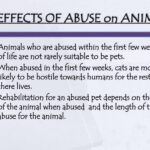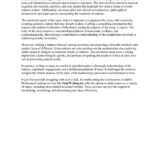Animal cruelty manifests in myriad forms, from overt acts of physical violence to insidious neglect and exploitation. It permeates our society, often intertwining with broader social issues such as poverty, domestic violence, and systemic injustice. Addressing this pernicious dilemma requires both robust policy initiatives and personal commitment from individuals in communities across the globe. The confluence of legislative reform and grassroots activism can effectively mitigate the prevalence of cruelty towards animals.
The first step in a comprehensive approach to combat animal cruelty is the establishment and enforcement of stringent laws. Many regions currently lack sufficient legal frameworks that recognize the gravity of animal suffering. Advocacy for stronger legislation is crucial. This means pushing for harsher penalties for offenders, which can serve as both a deterrent and a means of justice for victims. Legislative measures should encompass various forms of animal abuse including, but not limited to, dog fighting, hoarding, and neglect. States and municipalities must prioritize the reevaluation of current laws, ensuring they reflect the ethical evolution in the treatment of animals.
Integral to this legal reform effort is the establishment of animal control agencies equipped with adequate resources. These agencies should not only enforce existing laws but also actively engage in preventative education within the community. Training programs for law enforcement personnel are essential. Officers must be able to identify signs of cruelty and understand how to approach cases with sensitivity and legality. Collaborative workshops between law enforcement, animal welfare organizations, and community groups can foster a cohesive strategy to combat abuse.
Public awareness campaigns play a pivotal role in addressing animal cruelty. Education serves as a powerful tool, empowering individuals to recognize abusive behavior. Schools can implement curricula that highlight empathy towards animals, teaching children the importance of compassionate treatment. Moreover, community workshops can facilitate conversations regarding the psychological and societal implications of cruelty. By raising awareness, society can instigate a culture of accountability. Activists can harness social media platforms for outreach, amplifying their message and creating an online community committed to animal rights.
At a personal level, individuals can take actionable steps to combat animal cruelty. One of the most impactful choices is the decision to adopt rather than shop for pets. Shelters are often inundated with animals in desperate need of homes and love. Supporting local shelters, volunteer work, or fostering animals can make a substantial difference. This personal investment not only alleviates the suffering of countless animals but also sends a message to the community about the importance of compassion and responsibility.
Engaging with local legislators is another avenue through which individuals can influence change. This involvement may range from signing petitions to attending town hall meetings and advocating for animal-friendly policies. Forming or joining local advocacy groups can amplify one’s voice, creating a unified front that captures the attention of policymakers. The sheer power of collective action cannot be overstated. When a community demonstrates its commitment to animal welfare, it can compel local governments to adopt more progressive policies.
Additionally, embracing consumer responsibility can create ripple effects throughout industries that perpetuate animal cruelty. Making astute choices about products can drive change. Supporting companies that adopt humane practices and rejecting those that exploit animals is a powerful form of protest. Consumer demand directly impacts corporate behavior; when individuals vocalize their preferences for cruelty-free products, businesses take notice. The rise of ethically conscious brands demonstrates that compassion can indeed coincide with successful entrepreneurship.
Engagement in existing animal welfare organizations not only aids animals but also broadens the coalition dedicated to combating cruelty. Volunteering at shelters, participating in awareness days, or lending skills to fundraisers creates a multifaceted approach to advocacy. These organizations often provide essential resources, from fostering programs to rehabilitation efforts, and would benefit from the diverse talents individuals can offer.
The intersection of animal cruelty and domestic violence remains a significant area for attention. Studies have shown that individuals who engage in violence against animals are likely to exhibit similar behaviors towards humans. Addressing animal cruelty thus becomes an integral part of larger social justice movements. Collaborating with organizations that support survivors of domestic violence can strengthen efforts to protect both people and animals. Initiatives that provide safe havens for victims often include their pets, emphasizing the intrinsic connection between human and animal welfare.
Another innovative approach involves utilizing technology to combat animal cruelty. Digital platforms can facilitate reporting mechanisms for abuse, providing a confidential means for individuals to speak out. Smartphone applications that educate users about signs of mistreatment empower everyday citizens to act as watchdogs in their communities. Furthermore, social media can serve as an outlet for raising awareness and organizing events, quickly mobilizing support for animals in need.
Ultimately, the fight against animal cruelty necessitates a multi-faceted approach that embraces both robust policy initiatives and dedicated personal actions. By advocating for stronger laws, raising public awareness, engaging with legislation, making conscientious consumer decisions, volunteering, and leveraging technology, an individual can become an active participant in the movement against cruelty. Each small action contributes to a larger societal shift towards compassion and respect for all living beings. The time for action is not just now; it is every day, as we strive for a world where animals are treated with the dignity they so richly deserve.







